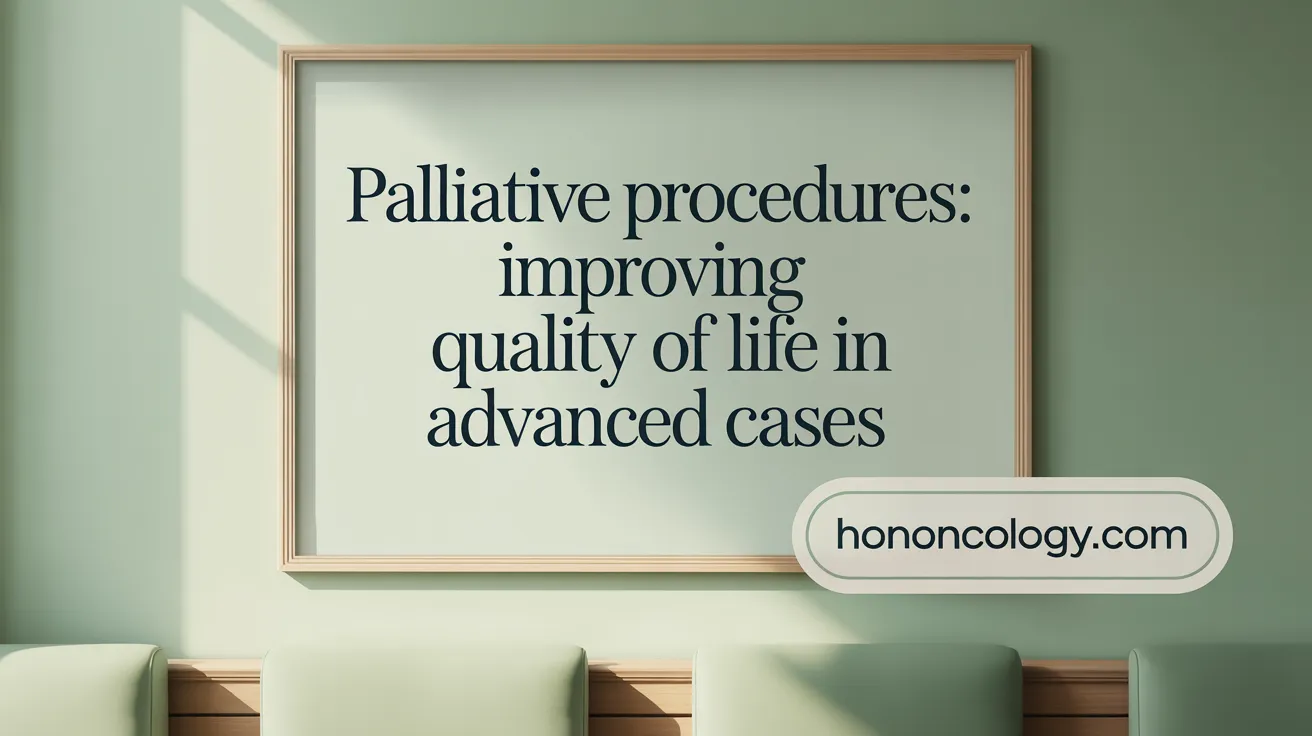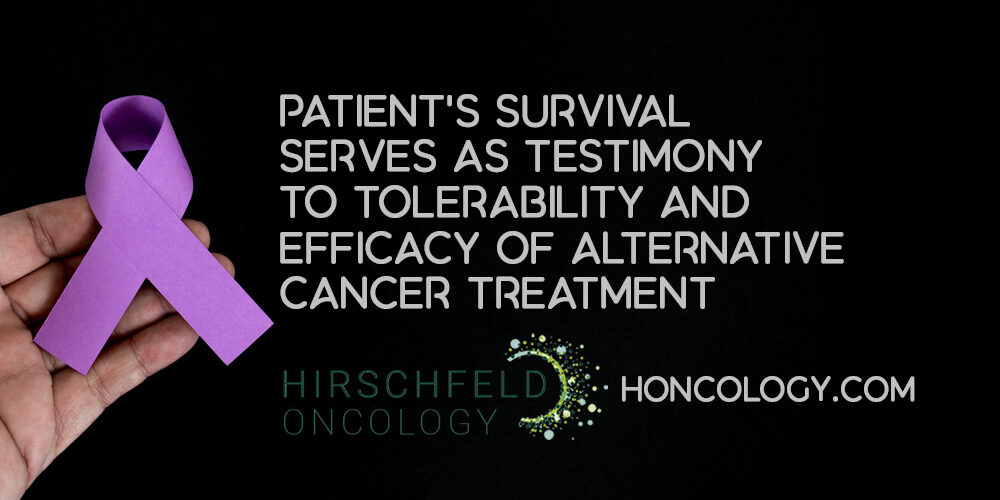Introduction to Comprehensive Gastrointestinal Cancer Treatment
Overview of gastrointestinal cancers and their impact
Gastrointestinal (GI) cancers encompass malignancies of the digestive system, including the stomach, esophagus, liver, pancreas, colon, and more. They represent a significant health burden globally, accounting for a large proportion of cancer-related morbidity and mortality. The varied types of GI cancers differ in incidence, risk factors, and outcomes, but collectively pose challenges due to often advanced disease at diagnosis.
Importance of multidisciplinary care and personalized treatment planning
Effective management of GI cancers relies on a multidisciplinary approach. Teams typically include surgical oncologists, medical oncologists, gastroenterologists, radiation specialists, genetic counselors, and supportive care providers. This collaboration enables comprehensive evaluation and the creation of personalized treatment plans tailored to tumor biology, stage, patient health, and preferences.
Role of innovation and standard therapies combined for improved outcomes
Today's GI cancer care integrates established treatments such as surgery, chemotherapy, and radiation with novel innovations. These include molecularly targeted therapies, immunotherapy, precision diagnostics, and minimally invasive surgical techniques. This combination aims to improve survival, reduce side effects, and enhance quality of life. Clinical trials and ongoing research continually expand these options, making cutting-edge care accessible while maintaining proven standards.
Gastrointestinal Cancers Treatment Key Facts
- Surgical interventions like gastrectomy and colectomy are primary curative options with minimally invasive and robotic techniques improving outcomes.
- Lymphadenectomy, especially removing >15 lymph nodes in stomach cancer, is crucial for accurate staging and prognosis.
- Chemotherapy regimens such as FLOT and CAPOX are tailored to cancer stage, often used as neoadjuvant or adjuvant treatments.
- Radiation therapy, especially EBRT and IMRT, is used for tumor shrinkage, post-operative treatment, or symptom palliation in stomach cancer.
- Immunotherapy with checkpoint inhibitors like nivolumab benefits patients with MSI-H/dMMR tumors, with ongoing development of novel immunotherapies.
- Targeted therapies focus on molecular biomarkers like HER2 (trastuzumab), VEGFR (ramucirumab), and FGFR, guided by molecular profiling.
- Early diagnosis is enhanced through endoscopic mucosal resection (EMR) and endoscopic submucosal dissection (ESD) using advanced imaging tools.
- Multimodal treatment combines surgery, chemotherapy, radiation, immunotherapy, and targeted therapy tailored to staging and molecular features.
- Liquid biopsies analyzing ctDNA and CTCs, alongside genetic profiling, support early detection, monitoring, and personalized therapy decisions.
- Supportive and palliative care with endoscopic procedures, symptom management strategies, and multidisciplinary teams significantly improve patients' quality of life.
1. Surgical Interventions: Cornerstone of Curative Treatment

Types of Surgical Procedures for Gastrointestinal Cancers
Surgery remains a primary and often curative treatment for gastrointestinal (GI) cancers. Procedures vary by cancer type and location. Common surgical interventions include:
- Gastrectomy: Removal of part or all of the stomach, tailored to tumor size and spread. Subtotal gastrectomy removes a portion, while total gastrectomy removes the entire stomach.
- Colectomy: Surgical removal of part of or the entire colon for colorectal cancers.
- Endoscopic Resection: Minimally invasive removal of early-stage tumors from the digestive tract lining.
- Other resections: Including esophagectomy, small intestine resections, and liver metastasis removal depending on cancer spread.
Minimally Invasive and Robotic-Assisted Surgical Techniques
Advances in surgery have introduced minimally invasive approaches such as laparoscopic and robotic-assisted surgery. These techniques offer patients:
- Smaller incisions
- Reduced blood loss
- Faster recovery
- Potentially improved surgical precision
Robotic gastrectomy and colectomy have become standard options at specialized centers, enhancing tumor resection accuracy and patient outcomes.
The Importance of Lymph Node Removal and Surgical Precision
Lymphadenectomy—removal of lymph nodes] near the tumor is essential for accurate staging and reducing cancer recurrence. For stomach cancer, removing more than 15 lymph nodes is a common practice to improve prognosis. Surgical precision ensures complete tumor excision and helps avoid residual disease.
Palliative Surgical Options
When curative surgery is not feasible, palliative procedures help relieve symptoms and maintain quality of life:
- Endoluminal stent placement: Keeps obstructed digestive tract passages open to allow eating and digestion.
- Gastrojejunostomy: Bypasses blocked stomach outlets by connecting the stomach to the small intestine.
- Endoluminal laser therapy and ablation: Reduce tumor bulk to alleviate obstructive symptoms.
These interventions aim to improve symptom control in advanced or unresectable cases.
2. Chemotherapy: Integral to Multimodal Treatment Plans
Systemic Chemotherapy Regimens and Their Applications by Cancer Type and Stage
Chemotherapy plays a central role in treating gastrointestinal (GI) cancers, often tailored to the specific type and stage of cancer. For resectable gastric cancer, triplet regimens such as FLOT (fluorouracil, leucovorin, oxaliplatin, and docetaxel) have become standard, improving survival. Chemotherapy is used before surgery (neoadjuvant chemotherapy) to shrink tumors, making them easier to remove, and after surgery (adjuvant chemotherapy to eliminate residual cancer cells.
Neoadjuvant and Adjuvant Chemotherapy Roles
Neoadjuvant chemotherapy is typically applied preoperatively to reduce tumor size and enhance surgical outcomes, common in potentially resectable cancers. Adjuvant chemotherapy follows surgery aiming to lower the risk of cancer recurrence, especially in stages II and III gastric cancers. For example, agents like capecitabine or S-1 combined with oxaliplatin (CAPOX) are effective adjuvant regimens.
Regional Chemotherapy: Hyperthermic Intraperitoneal Chemotherapy (HIPEC)
HIPEC is a specialized regional chemotherapy where heated chemotherapy drugs are directly circulated within the abdominal cavity following surgical tumor removal. This technique targets microscopic disease spread in the peritoneum, offering potential benefit in select GI cancers with peritoneal involvement.
Common Chemotherapy Drugs and Combinations in GI Cancers
Widely used chemotherapy agents include capecitabine, cisplatin, docetaxel, fluorouracil (5-FU), oxaliplatin, and paclitaxel. These drugs are often combined to maximize efficacy, such as the FLOT combination in gastric cancer or mFOLFOX6 in colorectal cancer. Custom regimens are chosen based on tumor biology, patient condition, and treatment goals.
3. Radiation Therapy: Precision Targeting to Complement Other Treatments
What types of radiation therapy are commonly used for stomach cancer?
External beam radiation therapy (EBRT) is the standard approach used to treat stomach cancer, employing high-energy X-rays to destroy cancer cells. Advanced forms like intensity-modulated radiation therapy (IMRT) precisely target tumors while sparing surrounding healthy tissues, reducing side effects. Stereotactic body radiation therapy (SBRT) enables delivering higher doses in fewer sessions with pinpoint accuracy.
How does combining radiation and chemotherapy improve treatment?
Chemoradiation, the combination of radiation therapy and chemotherapy, enhances cancer-killing effects more than either treatment alone. Chemotherapy sensitizes tumor cells to radiation, improving tumor shrinkage and control. This approach is often used before surgery (neoadjuvant chemotherapy) to downstage tumors and make surgical removal more effective.
When is radiation therapy used beyond tumor shrinkage?
Radiation is sometimes applied postoperatively to eliminate residual cancer cells or when surgery isn't possible. It also serves as palliative care to alleviate symptoms like pain, bleeding, or obstruction caused by advanced stomach cancer, helping improve patients' quality of life.
Are there emerging radiation techniques for stomach cancer?
Proton therapy in stomach cancer is an emerging form that uses positively charged particles instead of X-rays. It offers more precise dose distribution with less collateral damage to healthy tissue. This may translate into fewer side effects and better tolerance, though its availability remains limited.
In summary, radiation therapy is a crucial component in innovative stomach cancer treatments, especially when used precisely alongside chemotherapy and surgery. Innovations in radiation delivery continue to refine its effectiveness and safety for patients.
4. Immunotherapy: Harnessing the Immune System Against Cancer
What are checkpoint inhibitors and how do they work in GI cancers?
Checkpoint inhibitors are drugs that block proteins such as PD-1 and PD-L1, and CTLA-4 which cancer cells use to evade immune detection. By inhibiting these pathways, the immune system's T cells can better recognize and destroy gastrointestinal (GI) cancer cells. Approved agents like nivolumab and pembrolizumab are commonly used, especially in advanced GI cancers.
Who benefits most from checkpoint inhibitors?
Patients with tumors featuring microsatellite instability-high (MSI-H or deficient mismatch repair (dMMR mechanisms respond particularly well to checkpoint blockade immunotherapy. Biomarker testing helps identify these subgroups to tailor treatment effectively. For example, MSI-H gastric cancers show better responses and improved survival outcomes with PD-1 inhibitors (source.
What are emerging immunotherapy approaches in GI cancers?
Beyond checkpoint inhibitors, novel immunotherapies under investigation include bispecific antibodies designed to simultaneously engage immune cells and tumor antigens, enhancing immune attack with reduced toxicity. CAR-T cell therapies targeting proteins like Claudin 18.2 are showing promise in advanced gastric cancers, while personalized cancer vaccines aim to stimulate immune recognition of tumor-specific proteins (AstraZeneca GI cancer technologies, Immunotherapy in GI cancers).
How can combination strategies improve immunotherapy?
Combining immunotherapy with chemotherapy, radiation, or targeted therapies has shown enhanced efficacy. For instance, perioperative regimens combining chemotherapy (FLOT) with immune checkpoint inhibitors like durvalumab have improved survival in localized gastric cancers (MATTERHORN trial). Such multimodal approaches optimize tumor shrinkage and immune activation.
These advances position immunotherapy as a transformative modality in GI cancer treatment, offering hope for durable responses especially in biomarker-defined patient populations (Precision Medicine GI oncology).
5. Targeted Therapy: Personalizing Treatment Based on Molecular Profiles
What molecular biomarkers and targeted agents are important in stomach cancer treatment?
Stomach cancer treatment increasingly focuses on targeting specific molecular biomarkers such as HER2, VEGFR, and FGFR, which fuel cancer growth. Commonly used targeted agents include trastuzumab for HER2-positive tumors, ramucirumab targeting VEGFR pathways, and bemarituzumab directed against FGFR2. These therapies specifically disrupt cancer cell signaling pathways, slowing tumor progression.
How is tumor genetic profiling used to adapt specific therapies?
Genetic and molecular profiling for personalized treatment of tumors plays a critical role in guiding personalized treatment. By assessing biomarker expression, oncologists can choose therapies that align with the tumor’s unique genetic makeup. For example, HER2 amplification directs clinicians to trastuzumab-based treatment, improving outcomes.
What are antibody-drug conjugates (ADCs) and next-generation targeted drugs?
Antibody-drug conjugates (ADCs) and pharmacology of capecitabine and S-1 combine antibodies specific to cancer markers with toxic chemotherapy agents, delivering the drug directly to cancer cells while sparing healthy tissue. Promising ADCs in stomach cancer include trastuzumab deruxtecan, particularly effective in HER2-positive cases. Next-generation drugs seek to improve precision, overcome resistance, and reduce side effects.
Why is multidisciplinary molecular diagnostics important?
Multidisciplinary molecular diagnostics requires collaboration among pathologists, oncologists, and geneticists to accurately identify actionable tumor characteristics. This comprehensive approach ensures selection of the most effective targeted therapies and inclusion in relevant clinical trials, advancing personalized cancer care.
6. Endoscopic and Minimally Invasive Techniques: Early Diagnosis and Treatment
What are endoscopic mucosal resection and submucosal dissection?
Endoscopic mucosal resection (EMR) and endoscopic submucosal dissection (ESD) are minimally invasive procedures for early-stage gastrointestinal cancers, especially stomach and esophageal cancers. EMR involves removing superficial cancerous lesions from the lining of the digestive tract using an endoscope, ideal for carcinoma in situ or very early tumors. Endoscopic mucosal resection for stomach cancer extends this approach by enabling removal of larger and deeper lesions with precise dissection beneath the mucosa, improving complete tumor excision rates.
How have endoscopy advances improved diagnosis and staging?
Recent advances include high-definition imaging and enhanced biopsy techniques. Gastric cancer prevention provides clearer visualization of the mucosal surface, aiding early detection of premalignant and malignant lesions. Systematic biopsy protocols in gastric cancer surveillance combined with mucosal cleansing and photodocumentation increase the accuracy in assessing tumor invasion depth and extent. These improvements allow better clinical staging, which is critical for treatment planning.
What are the minimally invasive surgical options?
Laparoscopic and robotic-assisted surgeries offer less invasive alternatives to traditional open gastrectomy or bowel resection. These techniques involve small incisions and specialized instruments, resulting in reduced postoperative pain, shorter hospital stays, faster recovery, and potentially improved surgical precision. Robotic gastrectomy, in particular, enhances dexterity and vision for complex dissections required in stomach cancer surgeries.
How is endoscopy used for palliative care?
Endoscopic interventions such as endoluminal stent placement provide symptom relief in advanced gastrointestinal cancers by reopening obstructed passages in the stomach or intestines. This improves patients' ability to eat and manage digestive function when tumors block food pathways. Additional palliative methods include endoscopic laser therapy to control bleeding and strictures, enhancing quality of life without major surgery.
7. Multimodal Treatment Strategies: Integrating Therapies for Optimal Outcomes
How are surgery, chemotherapy, radiation, immunotherapy, and targeted therapy combined?
Treatment for stomach cancer is increasingly multimodal, combining surgery with chemotherapy, radiation, immunotherapy, and targeted therapy. The integration depends on cancer staging and the patient’s overall health. Early-stage cancers may be effectively treated with surgery alone or combined with chemotherapy. For more advanced cancers, a combination of neoadjuvant (preoperative) chemotherapy and radiation is often used to shrink tumors and improve surgical resectability. Postoperative ([adjuvant] treatments) help eliminate residual disease, reducing recurrence risk.
What role does neoadjuvant chemoradiotherapy play?
Neoadjuvant chemoradiotherapy has been shown to improve survival rates by shrinking tumors before surgery, making complete removal more feasible. This approach is standard for locally advanced and potentially resectable stomach cancers. It enhances the likelihood of removing all cancer tissue, including affected lymph nodes, thus improving outcomes.
Why are clinical trials important in developing combination regimens?
Clinical trials are critical for validating the efficacy and safety of these combined approaches. Institutions like MD Anderson and others conduct trials assessing new immunotherapy agents, targeted molecules, and chemotherapy combinations. These studies help tailor treatments based on tumor genetics and patient response, aiming to optimize benefits while minimizing side effects.
How does personalized, multidisciplinary treatment planning improve outcomes?
A multidisciplinary team—comprising surgical oncologists, medical oncologists, radiation oncologists, pathologists, and genetic counselors—collaborates to design individualized treatment plans. Genetic and molecular profiling guide the selection of targeted therapies and immunotherapies. This personalized approach improves efficacy and quality of life, ensuring patients receive the most appropriate, evidence-based therapies for their specific cancer subtype and overall health status.
8. Innovations in Molecular Diagnostics and Liquid Biopsy to Guide Therapy
Use of circulating tumor DNA (ctDNA) and circulating tumor cells (CTCs) for diagnosis and monitoring
Liquid biopsy is an emerging non-invasive technique allowing detection of tumor-derived materials such as circulating tumor DNA (ctDNA) and circulating tumor cells (CTCs) in the bloodstream. This method aids in early diagnosis, real-time monitoring of therapeutic responses, detection of minimal residual disease, and early relapse signals in gastrointestinal cancers including stomach cancer.
Genetic sequencing and molecular profiling to identify actionable targets
Comprehensive genetic and molecular profiling of tumors enables identification of specific mutations or alterations driving cancer growth. This information helps clinicians select targeted therapies for stomach cancer that specifically interfere with cancer cell pathways, such as HER2-targeted agents or FGFR inhibitors. Profiling also uncovers molecular subtypes like microsatellite instability (MSI) or PD-L1 expression, crucial for personalized treatment plans.
Leveraging artificial intelligence and digital pathology for precision medicine
Advanced technologies like artificial intelligence (AI) in GI cancer and digital pathology enhance the accuracy of molecular diagnostics. AI assists in interpreting complex data from genomic analyses and histopathology slides, enabling finer tumor characterization and prediction of treatment responses. These tools support tailored therapeutic strategies by integrating multi-omics data.
Biomarker-driven patient selection to optimize immunotherapy and targeted therapy
The identification of biomarkers such as HER2 amplification, MSI status, PD-L1 expression, and specific gene mutations guides patient selection for immunotherapy in gastrointestinal cancers and targeted drugs. This approach maximizes treatment efficacy and minimizes unnecessary exposure to ineffective therapies, improving outcomes and reducing toxicity.
These innovations contribute to a more precise, dynamic, and individualized management of stomach and other gastrointestinal cancers, continuously improving patient care.
9. Supportive and Palliative Care: Enhancing Quality of Life
What Are Effective Symptom Management Strategies for Gastrointestinal Side Effects From Treatment?
Cancer treatments often cause gastrointestinal (GI) symptoms like nausea, diarrhea, or obstruction. Effective management involves dietary modifications, pancreatic enzyme replacement, treatment for bile acid malabsorption, and antibiotics for small intestinal bacterial overgrowth. Addressing multiple causes simultaneously improves patient comfort. For detailed guidance, refer to Managing Gastrointestinal Symptoms from Cancer Treatment and British Society of Gastroenterology practice guidance.
How Do Palliative Surgeries and Endoscopic Procedures Help?
Palliative surgeries and endoscopic procedures, such as endoluminal stent placement and laser therapy, relieve blockages and bleeding caused by tumors. Gastrojejunostomy can create new food passageways when obstructions occur, helping maintain nutrition and reduce symptoms. These are part of a comprehensive set of Stomach cancer surgical options.
What Role Do Multidisciplinary Care Teams Play?
Multidisciplinary teams—comprising surgeons, oncologists, gastroenterologists, nutritionists, and pain specialists—work together to meet nutritional, psychological, and pain management needs. Comprehensive care enhances patients' overall wellbeing and helps manage complex symptoms. See more on Gastrointestinal cancer care and Multidisciplinary gastrointestinal cancer care for an overview of team-based approaches.
Why Is Education and Patient-Centered Supportive Care Important?
Educating patients about symptom management and involving them in care decisions empower them and improve quality of life. Early intervention and supportive care are crucial to mitigating lasting GI effects and optimizing treatment outcomes. Learn more at Managing gastrointestinal symptoms from cancer treatment: new guidance for health professionals and Comprehensive Gastrointestinal Symptom Management.
The integration of multidisciplinary support and targeted palliative procedures is essential to enhance quality of life for gastrointestinal cancer patients facing challenging symptoms and treatment side effects.
Conclusion: Advancing Gastrointestinal Cancer Treatment with Compassion and Innovation
The evolving landscape of GI cancer treatment
Gastrointestinal (GI) cancer treatments are rapidly advancing by integrating established procedures like surgery, chemotherapy, and radiation with emerging therapies such as immunotherapy and targeted agents. These innovations improve tumor control and patient outcomes across different cancer types.
Role of precision medicine and teamwork
Precision medicine—using genetic and molecular profiling—enables personalized treatment plans that precisely target tumors. Multidisciplinary collaboration among surgeons, oncologists, radiologists, and other specialists ensures comprehensive care tailored to each patient’s needs, enhancing survival chances.
Clinical trials and supportive care
Clinical trials provide patients access to cutting-edge therapies that may offer improved efficacy or fewer side effects. Additionally, symptom management and palliative care focus on maintaining quality of life during treatment, emphasizing compassion alongside innovation in GI cancer care.





.png)


.png)
.png)




